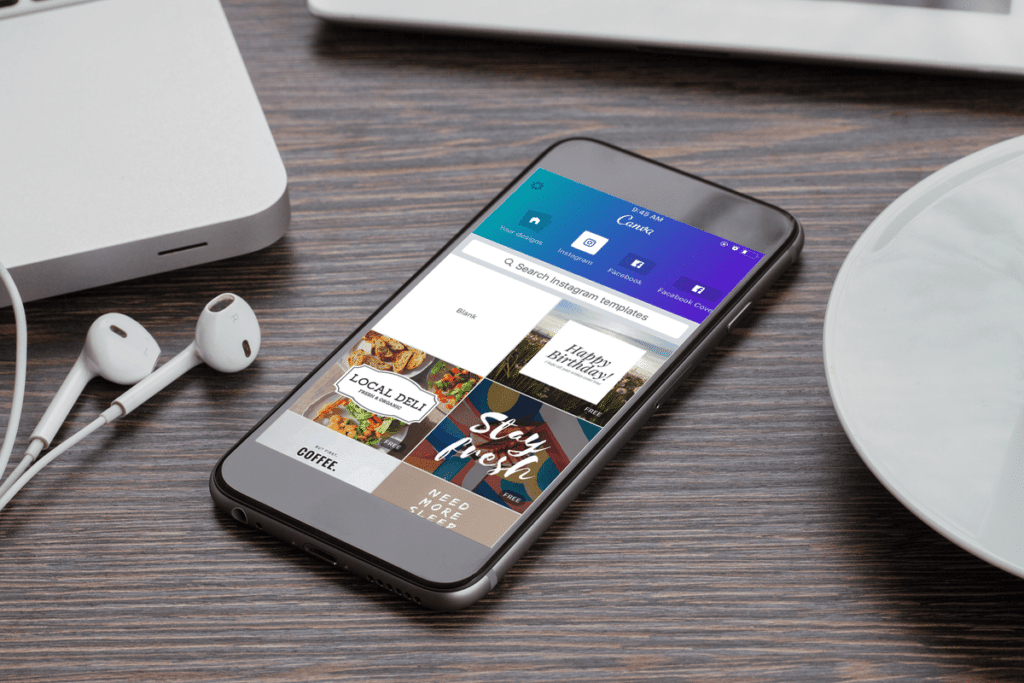A picture speaks a thousand words, so they say… But it’s actually more like 60,000—that’s how much faster the human brain processes images than text. And when it comes to blogs, posts with images get a whopping 94% more views than ones without.
That should be more than enough reason to prioritize using top-quality visuals. But in this article we’ll delve deeper into the powerful impact that the right use of blog images can have on your content marketing success. We’ll also talk about best practices for uploading photos to your site, where to find free images, tools for making your own professional visuals, and more.
First let’s talk about the importance of blogging
The advantages of having a blog on your company’s website are endless—from lead generation and ROI, to establishing yourself as a thought leader in your niche. Here are two stats explaining why blogs are a top marketing strategy for global brands:
- Companies that prioritize blogs get 67% more leads than those that don’t.
- Blogs are considered among the top five most trusted sources of information.
Adding pretty pics alone won’t make your blog effective. You’ll also need quality content, editorial calendar, and SEO and content strategy. Most importantly, you’ll need to provide valuable information—after all, the vast majority of readers share blog posts because they find them helpful.
That said, blog images are undeniably a crucial piece of the equation.
Now let’s look at the benefits of blog images
Catch the reader’s eye when skimming through articles
The first thing that draws us into a blog post is the feature image and the headline. Then we quickly scroll through the article, either on our desktop, smartphone or tablet, glancing through the images and subheadings.
With the right images, readers are much more likely to stay on your page, read through your article, and even share it.
Allow readers to retain much more information
We’re visual learners. In fact, 93% of all communication is visual and, as mentioned above, the human brain processes images 60,000 times faster than words.
That said, there’s a theory called the “picture superiority effect” which means that readers retain text better when it’s combined with visuals. When we read words alone, we remember about 10%. Yet when that same text is combined with an image, we remember 65%. This is one reason why infographics are a great way to present information.
Lead to action
Images not only make blog posts easier to process, but are also more compelling and memorable. As a result, readers are more likely to engage with your post, either by viewing, clicking or sharing—especially if your photos convey emotions, present useful information, and are very eye-catching.
See also: The future of marketing is visual – Mario Bini, storytelling extraordinaire
Tips for choosing the right blog images—and uploading them

Use photos with people in them
Studies have found that the most memorable photos usually have people in them, and they also tend to be the most appealing. This is quite understandable, as viewers can identify with the people in the photo, making it more relatable and easy to understand different emotions, settings and stories.
Note: Think carefully about the type of culture you want to represent through your images. For example, if you’d like to convey a diverse and inclusive company environment, then your images should include people from different backgrounds, ethnicities and ages.
Find visually appealing photos that convey emotion
Although photos with people in them are more appealing to the eye, that doesn’t mean you should limit yourself. All types of photos can convey emotion, from illustrations to landscapes. You can also be creative and use photos that depict a feeling rather than a literal representation.

Prioritize the feature image
The feature image is the first thing viewers see, sometimes even before the headline. It’s also what appears when you share your articles on social media (this means you should definitely take into account the size and the way it shows up when shared on different channels like Facebook and LinkedIn).
Updates with images on Facebook get 2.3 times more engagement than ones without, and tweets with images are 34% more likely to get retweeted.
Size images correctly so they load quickly
If your photos are too large, then they may take a while to load on users’ phones and computers. Just a 3-second lag might mean a user leaves your page. That’s why it’s important to size photos correctly. Hubspot recommends using images less than 100kb (less than 500 pixels). You can size your photos directly on WordPress (if you use WordPress), in the preview feature on your computer, or use free tools like Befunky.
See also: 8 best tools for running a blog in multiple languages
Optimize blog images for SEO
Make sure to optimize your photos for SEO best practices. At the very least, this means you should choose the right file name and write an alt text (or alt tag) for every photo you use. And if possible, your article’s keyword should be included in both.
Filling in the alt description of your photos also helps your site become more accessible—which is not only useful to users, but also Google.
See also: How to choose the right SEO agency to grow your business
Use images to separate short paragraphs
Remember, most of your readers are probably reading your articles on their phones and don’t want to see huge blocks of text. Using short paragraphs is key to blogging, and adding images in between paragraphs is a great way to separate them, making the article more dynamic and easy to read.
In fact, a study by Blog Pros assessed 100 of the highest-ranking blogs, and found that there was an image between every 350 words. Let’s learn from the pros.
Use visuals to present information
Infographics and charts are a highly effective way to present stats, numbers and quotes. In fact, infographics get three times more likes and shares than any other type of content! You can find tons of great infographics online, as well as create your own with free online tools like canva.com, visme.co and piktochart.
See also: 5 content ideas to boost your blog’s buzz
Great tools for finding blog images
Where to find pics for your blog
There are many sites that offer beautiful free images for you to use. Here at VeraContent we particularly like Unsplash and Pixabay. There are also several sites online where you can pay a reasonable fee for top-quality stock photos, like Shutterstock.

Make your own images for social media
Canva is one of the best tools for content creators right now. It lets you easily put together your own images with hundreds of free templates. What’s more, they’re all sized correctly for every social media channel imaginable.
You can also use Canva to make videos and animations, and the pro version allows you to schedule your posts on IG directly from the platform.
See also: Top 10 apps for content and marketing professionals
Spice up stock photos with filters
Ideally we’d all have access to an incredible in-house photographer who could create original photos for all our content marketing channels. But in most cases this just isn’t possible. That’s why stock photos are so useful. The good news is that we can tweak stock photos and make them a little more original by editing them, i.e. adding a filter, flipping them, or simply changing them to black and white.
Pro tip: Many companies choose a set filter for all their images; this helps create a unified brand portfolio and it’s easy to do.
Takeaways on the importance of blog images
All blogs should prioritize using high-quality visuals that convey emotions, present useful facts and ultimately, encourage readers to stay on your page and retain the information in the article. Using the right blog images can greatly enhance your impact on readers, leading to more engagement, memorability and credibility.
Need help finding the right blog images and enhancing your brand portfolio? Get in touch with us today!

